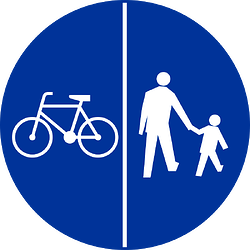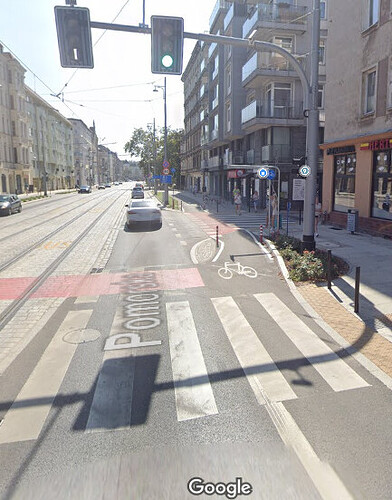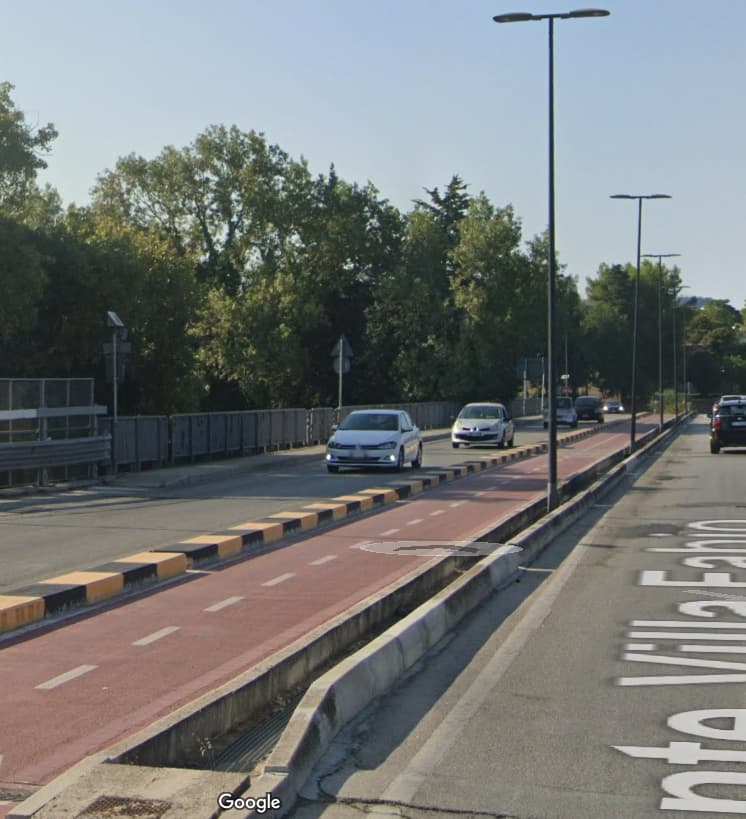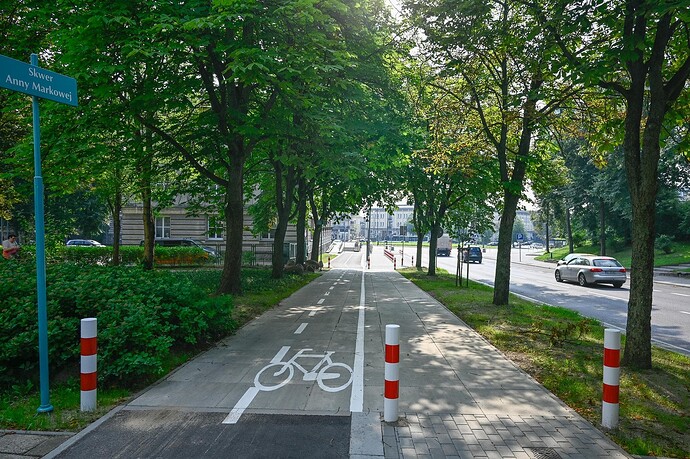Hello,
recently there have been lots of discussions (especially in the polish community) regarding mapping segregated cycle- and footpaths as 1 vs 2 ways.
I, of course, stand by the rule of not dividing ways when there’s no physical separation and ‘less means more’.
I believe that no data is lost when mapping with one line instead of two as long as the respective tags are filled in. I even belive that there’s a lot of data lost when mapping with two lines but that’s not what this thread is about. There have already been threads dedicated to this topic.
In many countries, such as Poland, there are two ways of mapping such roads, as described in Ref S5.
The biggest issue with tagging one line, however, is that there’s no consensus on mapping on which side the cycleway and on which the footway are located when using the segregated=yes tagging scheme. This is quite a problem as this is one of the main arguments of the two-line scheme defenders.
There do exist alternate methods of tagging that don’t cause such issues. One of them, which is widely used in the Netherlands, is highway=cycleway + sidewalk=right.
I, however, don’t necessarily like it though as it sort of implies that the footway part is less important than the cycleway which isn’t true especially on paths with wide footway parts.
It’s also not really what the polish sign for these paths suggests.
So, I’d like to propose that segregated=yes will mean by default that the cycleway is to the left and the footway is to the right relative to the way’s direction
(see forward & backward, left & right)
My reasoning is that there already exist physical tags whose direction drastically impacts the data they convey e.g. barrier=kerb, barrier=retaining_wall.
There’s also defaults on important tags such as junction=roundabout.
Now, you may ask, why should the cycleway be on the left and not on the right? Well, in most countries traffic takes place on the right side of the road which will then make it more logical to have the sidewalk keep the same direction as the nearby road while having the cycleway be closer to the carriageway in case of cycle lanes switching from running along the carriageway to along the footway like in the example below.
Also I believe that generally cyclepaths are placed closer to the main way more often than footpaths though I have no data to back up that claim.
That’s also how CyclOSM currently renders it. Cycleway on the left.
Paths with more than two lanes already have their own creative ways of being tagged as discussed in the other thread. They’re also an edge case so I won’t write about them here.
Now for the consequences of such a change.
First of all there already exist hundreds of thousands of path segments tagged in such a way without any care for the way’s direction. We could just live with that, slowly adjusting existing objects to the new consistent scheme. Another solution is to use a different tag than segregated=yes like segregated=forward/backward, to distinguish carefully signified placements of the cycleway and footway from generic segregated paths. This also opens up the possibility of mapping segregated paths when unsure of cycle- and footpath’s positions along the path.
Secondly, oneway:bicycle=-1 will have a reason to be used. Hurray!
Going a bit offtopic, I think it’s really silly for such a value to exist. Numeric values should only be used when the tag is related to numbers like maxspeed or step_count but for oneway it doesn’t make any sense. It would if we used oneway=1 and oneway=0 but if we use alphabetical values then we should just use oneway=reverse or oneway=opposite instead. It might be even better to use oneway=forward/backward/no instead of yes/-1/no.
Anyways, what are your opinions on the matter? Would using such a default be acceptable? Should we use a new tag instead?





